Kilgii Gwaay Finds
I am sure some of you have wondered what we actually found at the Kilgii Gwaay archaeological site that we invested so much energy into, and which I have blogged about for three weeks now. I can’t tell you about the new stuff from 2012 as it has not been published, or even analysed, and in any case the project leaders are still slogging away in the field on other sites and beyond asking permission for now. But it should be OK to show you some of the things from this year that are the same as were found 10 years ago and that have already been published, and to draw a bit from that work to illustrate the importance of the site.
Before I go on, I would like to say that this is my 300th post, the first 200 seem to go by much faster than the last 100. What keeps me going is all of you great readers, so many of whom like or comment. Thanks for sticking around and encouraging me. I really appreciate it.
In some recent posts I have concentrated on activities at the site that go into the excavation. Setting Up is about getting things ready for excavation and introduces the project and its participants, Keeping Water Out and Putting Water In cover some of the logistics of digging a wet site in the intertidal zone, and Water Screen is about filtering the excavated materials to find the small and delicate things. Other posts overlap with the project in various ways – many showing the immediate environment of the site; the kinds of food that occur on the beach and which were also present when the site was occupied 10,700 years ago; fishing offshore for halibut and lingcod, species that show up in the site deposits too; and so on. While I have not set out with a fixed plan for this series I hope that when it is done it not only describes the site and what archaeologists do while at work, but also gives a sense of the environment that these ancient people were living in.
If anyone is seriously interested in the paleoenvironmental history of the site and surrounding areas then check out Haida Gwaii: Human History And Environment from the Time of Loon to the Time of the Iron People edited by Daryl Fedje and Rolf W. Mathewes. There is a very complex story of changing environments, plants, animals and sea level that accompanies the early period of human occupation of Haida Gwaii, and some of those differences must mean very significant cultural differences between those occupants and the Haida culture present at the time of contact with Europeans 200+ years ago. Perhaps the two biggest differences are the rapidly rising sea levels and the different forest cover, including the absence of Redcedar which pollen studies from lake cores show were not established in the area until thousands of years later. Western Redcedar is the signature species of the Haida – their houses, canoes, poles, boards, boxes, baskets, ropes and many other apparently essential items were made from its wood and bark.

This appears to be split root (or limb) and is likely the trimmings from making something very fine, such as small cordage or tight basketry.
Sea level history in these early days was extremely dynamic. When the site was occupied relative sea level was very similar to modern levels but had been rising for nearly 4000 solar years, which it continued to do for another 600 years or so, peaking at about 15m higher (leaving this location about 50 feet underwater). During that time the sea level changed by ~165m, starting out with much of Hecate Strait being a dry flat plain connected in places to the mainland and ending with a considerably smaller archipelago than currently exists. Sea level stayed at those maximum levels until about 6000 years ago when they started to fall which they are still doing at around 2mm a year. The forces behind sea level are various and complex. The early change is related to ice loading on the mainland during glacial maximum – the weight of ice depressed the crust in that area, and raised the crust off shore where Haida Gwaii is located. The same effect as you get sitting an a water-bed – you make it go down in one place and rise in another. This “fore-bulge” under Haida Gwaii did not collapse immediately, even though the adjacent mainland rebounded very quickly as the ice melted. Once it did start to collapse it went quickly and as the land dropped, the sea level rose. However, all of this sea level change induced by crustal movement was mixed with rising global ocean levels from release of all that water formerly frozen on top of the continents. And, during those processes the crustal plates continued to slide under this area providing an upward impetus to parts of the coast, and a downward one to other areas.
The short story is that when this site was occupied the sea level had been rising for thousands of years, probably during most of the time that people had lived in the area. It was a similar level to the current one, but coming up at nearly 5cm a year, or 1 meter every 20 years, 5 metres in a hundred. It probably was not only a smooth rise, but one punctuated by occasional massive earthquakes uplifting a metre here and there from time to time (though there is very little evidence for this kind of event in the area at this time, it seems inconceivable that much crustal movement would occur without earthquakes). The people who lived here had to be adapted to a constantly changing shoreline, to fishing where their grandmothers were born, to ongoing change as a fact of life. They had to be responsive, able to react quickly, to move fast. So it is unlikely that they lived in large houses or even in large groups of people; much more likely they were small mobile flexible groupings of people often on the move, constantly aware of new opportunities opening and old ones closing. The effect that this would have on one’s world view is hard to imagine, but must have been profound. It certainly seems to have become deeply ingrained in Haida culture whose myths and histories contain many stories that hearken back to this early time and touch on the changes – stories that mention the first tree, islands rising from the sea, or of walking from one place to another now deeply under water.

The angle of stakes will be analysed to see if they form any patterns suggestive of structures of some kind, such as fish drying racks or shelters.
So, knowing that there was this much change going on, and that the culture must have been different in many ways from recent times, it would be surprising to find that many aspects of the Haida adaptation were already present 10,700 years ago. And yet that is what this site shows through its superb preservation and large collection of faunal remains, stone, wood and bone tools, paleoenvironmental information and other lines of evidence all packed into the beach of this small bay.
From the earlier work we know that this site was occupied for about 50 years at around 10,700 solar years ago (radiocarbon years are 9,450-9,400BP). The site lies on the edge of a small pond that once occupied what is now the centre of the beach. There are at least two areas of concentrated activity, one to the east and the other to the west of the pond. At the time of occupation the high tide line would have been just a bit higher than the current low tide line; roughly the zone that now has California mussel growing in it. This would have made the channel in front of the site much shallower and possibly most of it was tidal, but with a strong current. Thus, it would have been very rich in different kinds of seafood at low tide. The activity areas probably reflect campsites from a temporary seasonal occupation of this spot. The artifacts, a probable hearth feature, wooden stakes driven into the ground, animal bones and shellfish remains all indicate that people were hunting and fishing from this location, they were splitting wood, and making and repairing wood, stone and bone artifacts. They were braiding very fine cordage out of three strands, and binding small splints of wood with split roots, possibly as part of a basket. Today’s pictures illustrate some of these materials that were found again this year, with more information in their captions.
The initial work that was conducted found thousands of bones of fish, birds and mammals. The most numerous of the six mammals spp were bear, harbour seal and sea otter with sea-lion also being present. Of the 20 spp of birds by far the most numerous were Cassin’s auklet, short-tailed albatross, Alcids (auks) of various sizes and the Rhinoceros auklet. Various ducks, geese, loon, grebe, cormorants and even raven were present in small numbers. There were 13 identifiable distinct fish spp or groups with the vast majority being Rockfish, but also dogfish (a shark), Lingcod, Cabezon, Greenling being somewhat abundant and other species present included halibut, salmon, herring and so on. From these lists we can see that these people were catching the largest of available mammals (barring whales) to some of the smallest fish.
The species harvested were coming from the land or beaches (bear, river otter) and the ocean or small offshore islets (seals, sea otters). Pelagic hunting was taking place well offshore (albatross) and fishing included deep water methods as well as shallower ones. The species list is much the same as from more recent nearby sites that have been excavated indicating considerable overlap in a maritime technological knowledge for hunting and fishing, and implying other factors such as good water craft to engage in pelagic excursions. The main differences lie in the proportions – for instance recent sites have very little bear, and abundant salmon. Also present were California mussel that had clearly been brought to the site (as opposed to a naturally deposited shell) and likely some of the clam spp and snails and other shellfish that were present were food waste, though it is hard to separate the natural from the cultural deposition in this kind of environment.
It all proves a full-blown maritime cultural adaptation was well established 10,700 years ago, and implies it existed for hundreds or thousands of years before that. In fact, it suggests strongly that people came into the area knowing how to live from the ocean, and is an important piece in the debate about whether the Americas were first peopled by walking an inland route or via watercraft along the Pacific coast.
To open the gallery click on any thumbnail below then navigate with the arrows and escape to return to this page.
- It helps to be 6’5″ when digging small deep holes
- Small deep holes need long arms
- Gwaliga excavating.
- Gwaliga examining a wood chip
- Layers of peat and old humus soil layers contain large amounts of information about past plants through the macro fossils they contain, such as seeds, cones, leaves, branches and bark and also through pollen. A real treasure trove.
- This was on the beach surface – it shows grooving from sharpening bone or wood into points, possibly for arming fish hooks.
- A small bevelled abrasive stone for working wood, bone or shell.
- Larger stone flakes were abundant and are diagnostic of the earlier time period as they are rare in more recent Haida sites.
- A small flake of stone, of an unusual material type.
- These two flakes of stone refit one another, showing they were most likely made at this location and that stone tools were being made here rather than carried in from elsewhere.
- A small twig with bark, probably can be easily identified to species.
- Many wood chips have been found at Kilgii Gwaay
- Wood chips come in many sizes
- Another wood wedge for splitting wood into manageable sizes for various purposes.
- Several wedges were found, and numerous wood chips (top).
- What appears to be a small stake
- Distal end of a stake showing chop marks and crushing from being driven into ground
- The angle of the stakes will be analysed to see if they form a pattern suggestive of a structure of some kind – habitation, meat drying frame, and so on.
- This appears to be split root (or limb) and is likely the trimmings from making something very fine, such as small cordage or tight basketry.
- a piece of split wood left over from shaping or splitting wood
- Trimmings from making something, this split root is round on the other surface so was split in half
- Bucket with bird bone (L), wood pieces and clumps of peat from the pond edge.
- Bear Molar. Bear bones are present in unexpectedly high numbers at Kilgii Gwaay
- Probably another bear tooth, analysis will tell.
- Bones come in many sizes. This is a very small mammal bone. The right expert, with a good comparative collection, can identify such bones to species or genera.
- Bone that has cut marks, either an unfinished object or waste material from making another.
.
This link catalogues my posts on the project. I was accompanied on this trip by Tansy, one of the Quimper Hittys, who is blogging about the trip from a doll’s view. You can find those posts here.
Canon 5Dii, Canon 50mm/f1.4, Nikkor-N 24mm/f2.8 and SMC Takumar 100mm/f4 macro lenses. The EXIF data in the gallery above is not complete for the manual Nikkor and Takumar lenses as the camera cannot record aperture settings for those lenses.
.
.
































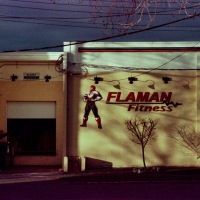
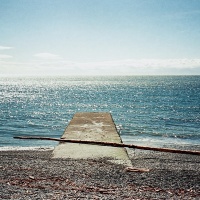
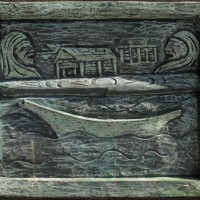
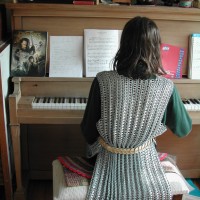
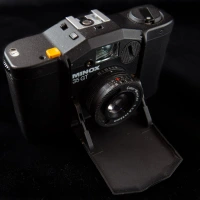
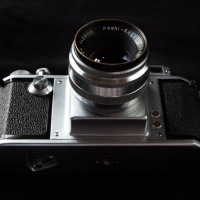


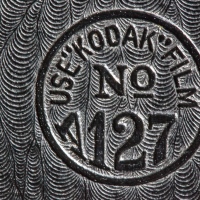


Pingback: Carving in Old Massett | burnt embers
Pingback: Museum: Eating and Performing Houses « burnt embers
Ehpem,
A very interesting post, kept me out of mischief for a couple of hours and as Google is my friend (several links on the subject) I suspect more hours will be spent reading.
Thanks.
David.
LikeLike
Thank you David – I am glad you have been enjoying these posts – a bit much to sit down and read all of them at once maybe, but so glad you did just that!
There was a recent article in the Globe and Mail about this project, though not about this component of it, the bits that continued on after I left the field. It has a photo gallery too. http://www.theglobeandmail.com/news/when-did-the-first-people-arrive-in-the-americas/article4431946/
LikeLike
Time well spent & thanks for the extra link.
David.
LikeLike
Amazing. It’s such a worthwhile endeavor to remember our shared history.
LikeLike
Ryan, I am so glad you see it as a shared hisotry. It is one of the problems of current politics in archaeology in North America is that First Nations often assert it to be their heritage exclusively and developers and others that have to pay for archaeology respond with the attitude of it’s their heritage, they should deal with it. Truly it is the shared heritage of human kind and we should value this as much as we value a segment of Roman wall buried in London, or remnants of a Hudson’s Bay Company fort in the north somewhere, or the Pyramids, Machu Pichu, Angkor Wat, and so on.
LikeLike
Indeed. I like to think that we’ve all become a part of this land. The history might not always be pretty, but it is certainly one that we share and should preserve.
LikeLike
Fabulous in-depth information here, my friend, I find myself riveted to your photos and story here! One of the things I always find interesting is trying to imagine what life was like for those who came before us, before a time of electricity and running water and such. Going back 10,000+ years is pretty difficult in terms of finding first-hand accounts, but when shared in the context of the story you’ve painted here with your words and photos, I really do feel like I have a pretty good idea of what they went through! Wonderful, wonderful post, my friend…
LikeLike
Hey Toad, thanks so much. I am glad to hear that these posts are informative and teaching you things. It is an awful lot of hard work and learning boiled down into a few paragraphs, part of a fascinating story.
LikeLike
Congratulations on your 300th post – a milestone 🙂 I love these photos, what a feast for the eyes as well as the imagination. I’m a sucker for hands in photos – the second one is exceptional! I’m loving this archeology series.
LikeLike
Ha! – a milestone indeed. Just don’t run over them with a small old English car, it can tear away the undersides…
I really like that photo of Gwaliga too – so intense in his examination – he’s an accomplished artist and I expect he looks at things very differently than I do. I have photos that show people holding objects, but mostly they include people that are still in the field and I can’t ask their OK to use their photos. Maybe once they are out I can do a revisit of my images and one more post featuring them and their work.
LikeLike
I have nominate you for an Inspiring Blog award -thank you for your inspiration.
http://pturnermoments.wordpress.com/2012/07/03/inspiration/
LikeLike
Paula – thank you so much. It is a real pleasure, and quite a surprise, to find that my posts are inspiration for other people’s work.
LikeLike
Ephem, these are gorgeous images along with being a fascinating and important subject.
Can I ask you how you became involved in doing this volunteer work in the first place? Perhaps I missed an explanation somewhere but I was wondering what your background is…
Another wonderful post.
LikeLike
Hi Karen, in the distant past before and another life I worked as a field archaeologist and had the good fortune to work in this area for a few summers. Since then I have been invited to join the team as a volunteer from time to time, a real privilege and always also a renewing experience for me – its a terrific way to spend some vacation time.
LikeLike
Thx for Sharing These interesting pictures. Nearly as if i have been there. 🙂
LikeLike
Thanks so much! Glad you like it.
LikeLike